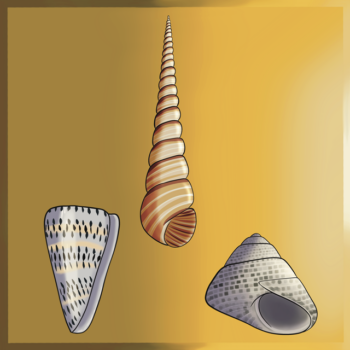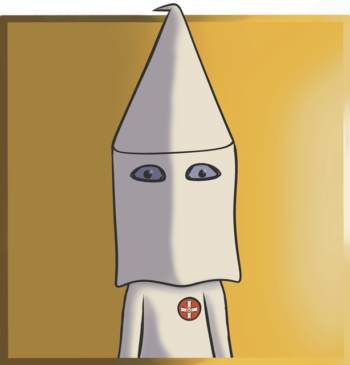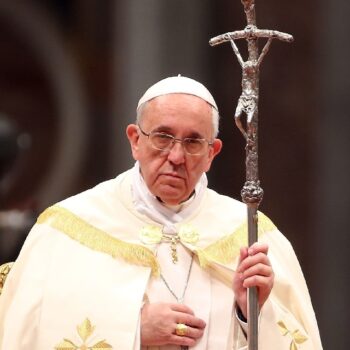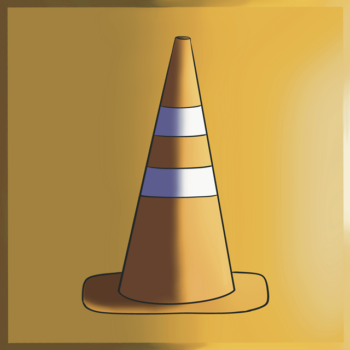Definition:
The number “0,” often referred to as “zero,” is a mathematical symbol that represents the absence of quantity or value.
Etymology:
The etymology of the number “0” traces back to the Sanskrit word “śūnya,” meaning “empty” or “void.” This concept of zero as an empty placeholder was later transmitted to Arabic as “sifr,” which also meant “empty” or “zero.” Arabic mathematicians further developed the concept and introduced it to Europe through translations of Arabic mathematical texts during the Middle Ages. The word “cipher” in English, meaning a numeric zero or a secret code, is derived from “sifr.” Eventually, the term “zero” entered English from Latin, where it was used to represent the concept of “nothingness” or the absence of quantity.
The Indian mathematician Brahmagupta is credited with introducing the concept of zero as a number in its own right in the 7th century CE. He defined zero as the result of subtracting a number from itself or as representing the absence of a value.
The Arabic numeral system, which included the digit “0,” was introduced to Europe through the works of Arabic mathematicians during the Middle Ages. It gradually replaced the Roman numeral system, which lacked a symbol for zero, and became the basis for modern mathematics.
Description:
A popular misconception is that zero holds value in the same way as the rest of the positive numbers. This is false. Zero symbolizes the absence of value. In other words, zero is non-existence. Non-existence is a fantasy. Non-existence does not exist. Non-existence is impossible. In other words, the existence of non-existence is impossible. It has never happened, and it can never happen. Another word for zero or non-existence is the word nothing. The word “thing” can refer to something that exists or something that does not exist, but “nothing” can only refer to non-existence.
Articles:
Beginning and End
Definition: The term “beginning” refers to the initial point or starting phase of something, while “end” denotes the conclusion or final stage. These terms are often used to describe the…
Symbolism:
The symbol for the number zero is a circle. It is often drawn as a high-backed circle to distinguish it from the letter “O.”
The symbol for zero as we know it today originated in ancient India, where it was initially represented by a dot. This dot symbolized the concept of shunya, which means “void” or “empty” in Sanskrit. Over time, this dot evolved into the numerical digit “0” that we use in modern mathematics.
If zero were to be drawn geometrically correctly, it should be invisible.
Articles:
A
Definition: The letter “A” is the first letter of many alphabets, including but not limited to the modern English alphabet. Etymology: The symbol for the letter “A” originates from the…
Ant Mill
Click to watch the video. Definition: An “ant mill,” also known as a “death spiral,” or “death circle,” is a phenomenon where a group of army ants (usually from the…
B
Definition: The letter “B” is the second letter of many alphabets, including but not limited to the modern English alphabet. Etymology: The symbol for the letter “B” originates from the…
Beehive
Definition: A “beehive” is a structure created by bees or provided by humans for bees to live in. It serves as a habitat for the colony, facilitating the production of…
Black Flag
Description: The black flag is a prominent symbol of anarchism. It is often displayed at protests, demonstrations, and other events as a symbol of resistance and solidarity. The black flag…
C
Definition: The letter “C” is the third letter of many alphabets, including but not limited to the modern English alphabet. Etymology: The letter “C” originates from the Phonecion the alphabet,…
Celtic Cross
Definition: The “Celtic Cross” is a form of Christian Cross featuring a traditional cross with a nimbus or ring surrounding the intersection. It is distinct for its combination of a…
Chi Rho
Definition: “Chi Rho” is one of the earliest forms of christogram, formed by superimposing the first two Greek letters of the word “ΧΡΙΣΤΟΣ” (Christos)—chi (Χ) and rho (Ρ). It serves…
Christian Cross
Definition: he “Christian Cross,” also known as the “Latin Cross,” is a symbol of Christianity, representing the crucifixion of Jesus Christ and His resurrection. Etymology: The word “cross” comes from…
Cone
Definition: A cone is a geometric figure with a circular base that tapers evenly to a single point, called the apex. Etymology: The word “cone” originates from the Latin word…
Conical Shell
Definition: A “conical shell” refers to a type of seashell that has a conical shape. Etymology: The term “conical” comes from the Greek “konikos,” meaning cone-shaped. “Shell” derives from the…
Crown
Definition: A “crown” is a ceremonial headpiece worn by royalty or deities as a symbol of authority, power, and legitimacy. Crowns are typically ornate, made of precious metals and jewels,…
Crucifix
Definition: A “crucifix” is a cross that bears the representation of Jesus Christ’s body, known as the corpus. Etymology: The word “crucifix” comes from the Latin “crucifixus,” meaning “one fixed…
Dunce Cap
Definition: A “dunce cap” is a tall conical hat historically used as a form of punishment in schools. Etymology: The term “dunce” originates from the name of John Duns Scotus,…
Flag
Definition: A flag is a piece of fabric, often rectangular or square, that is attached by one edge to a pole or rope. Etymology: The word “flag” comes from the…
Ice Cream Cone
Definition: An ice cream cone is a conical-shaped edible container typically made from a crispy baked or molded material, such as waffle, wafer, or sugar cone. An ice cream cone…
Jerusalem Cross
Definition: The “Jerusalem Cross,” also known as the “Crusader’s Cross,” is a Christian symbol consisting of a large cross potent (a cross with crossbars at the ends) surrounded by four…
Ku Klux Klan’s Hood
Definition: Ku Klux Klan’s white hood is a symbol associated with the Ku Klux Klan, a white supremacist hate group in the United States of America. Etymology: The Ku Klux…
Megaphone
Definition: A megaphone is a device used to amplify sound. Etymology: The word “megaphone” comes from the Greek words “mega” (meaning “great” or “large”) and “phone” (meaning “voice” or “sound”)….
Orthodox Cross
Definition: The “Orthodox Cross,” often referred to as the Russian Orthodox Cross, is a distinct Christian Cross associated particularly with the Eastern Orthodox Church. Etymology: The term “Orthodox” comes from…
Papal Ferula
Definition: A “papal ferula” is a ceremonial staff carried by the Pope. Etymology: The term “ferula” comes from the Latin word “ferula,” meaning “rod” or “staff.” It has historically been…
Party Hat
Definition: A “party hat” is a festive accessory typically worn at celebrations such as birthdays, New Year Transition, and other joyous events. Etymology: The term “party hat” combines “party,” which…
Patriarchal Cross
Definition: The “Patriarchal Cross” is a variant of the Christian Cross featuring two horizontal crossbars, with the upper one shorter than the lower one. Etymology: The term “patriarchal” comes from…
Pattée Cross
Definition: The “Pattée Cross” (also spelled “Pattee”, “Patee”, or “Paty”) is a distinct form of Christian Cross with arms that are narrow at the center and flare out in a…
Santa Hat
Definition: A “Santa hat” is a festive piece of headwear typically worn during the Christmas season. Etymology: The term “Santa hat” is derived from “Santa Claus,” the popular figure associated…
Seal of Solomon
Definition: The “Seal of Solomon,” also known as the “Ring of Solomon,” is a symbolic emblem attributed to King Solomon, a wise and powerful monarch in Jewish, Christian, and Islamic…
Southern Cross
Definition: The “Southern Cross” refers to a prominent constellation officially known as “Crux.” It is visible in the southern hemisphere and is composed of five stars that form a cross-like…
Star of David
Definition: The “Star of David,” also known as the Magen David (Shield of David), is a hexagram or six-pointed star formed by two interlocking triangles. It is a prominent symbol…
Sword
Definition: A “sword” is a bladed weapon used primarily for cutting or thrusting. Typically, it consists of a long metal blade attached to a hilt with a guard. Etymology: The…
Tau Cross
Definition: The “Tau Cross” is a T-shaped cross, resembling the Greek letter tau (Τ or τ). Etymology: The term “Tau” derives from the Greek letter “ταῦ” (tau), which was used…
The Circle of Life
Definition: “The Circle of Life” is a fictional concept that refers to the cycle of birth, growth, reproduction, death, and renewal that is observed in all living organisms. This concept…
The Great Seal of the United States of America
Definition: The Great Seal of the United States is a national seal that symbolizes the authority and sovereignty of the federal government. Description: The Great Seal was adopted by the…
Three (3)
Definition: The number “3” is the third natural number following “2” and preceding “4.” It represents a quantity of three units or objects. Etymology: The etymology of the number “3”…
Tornado
Definition: A “tornado” is a rapidly rotating column of air that extends from a thunderstorm to the ground. It is characterized by its funnel shape and intense winds, which can…
Tower Cake
Definition: A “kransekake,” meaning “wreath cake”, also known as a “tower cake,” is a Danish and Norwegian traditional cake made of almonds, sugar, and egg whites. Etymology: The term “tower…
Traffic Cone
Definition: A traffic cone is a brightly colored, conical-shaped safety device used to delineate traffic lanes or to redirect vehicles and pedestrians in a controlled manner. Etymology: The term “traffic…
Trefoil Cross
Definition: The Trefoil Cross is a symbol that combines the traditional Latin Cross shape with three rounded lobes at the end of each arm, creating a design that resembles a…
Triangle
Definition: A triangle is a geometric figure consisting of three lines that meet at three corners, also called angles or vertices. The sum of the three angles in a triangle…
Volcano
Definition: A “volcano” is a geological formation, typically a mountain, where molten rock (magma), ash, and gases from the Earth’s interior erupt through the Earth’s crust. Etymology: The word “volcano”…
Wanker
Definition: The “wanker” gesture is a well-known and highly offensive hand gesture primarily used in British and Commonwealth countries to insult someone. It mimics the action of male masturbation and…
White Nationalist Celtic Cross
Definition: The term “White Nationalist Celtic Cross” refers to a specific adaptation of the traditional Celtic Cross that has been appropriated by white nationalist and white supremacist groups. Etymology: The…
Witch’s Hat
Definition: A witch’s hat is a hat worn by a witch. It’s typically a tall pointed, cone-shaped black hat with a wide brim. Etymology: The term “witch” comes from the…
Wizard’s Hat
Definition: A wizard’s hat is a hat worn by a wizard. It’s typically a tall pointed, cone-shaped hat with a wide brim, adorned with stars, moons, or other mystical symbols….
Religion:
Religion is about deceiving you into believing that non-existence exists. It is about deceiving you into believing that the impossible can happen. But it’s just a language scam. Zero, non-existence, nothing, and impossible are, by definition, lacking in existence and can never be argued to become existence. However, religion tries linguistic tricks such as the concept that “nothing is impossible,” as if it’s supposed to mean that “everything is possible.” But listen carefully to what is actually being said: “nothing = impossible,” in other words, “nothing is the same as impossible.”
































